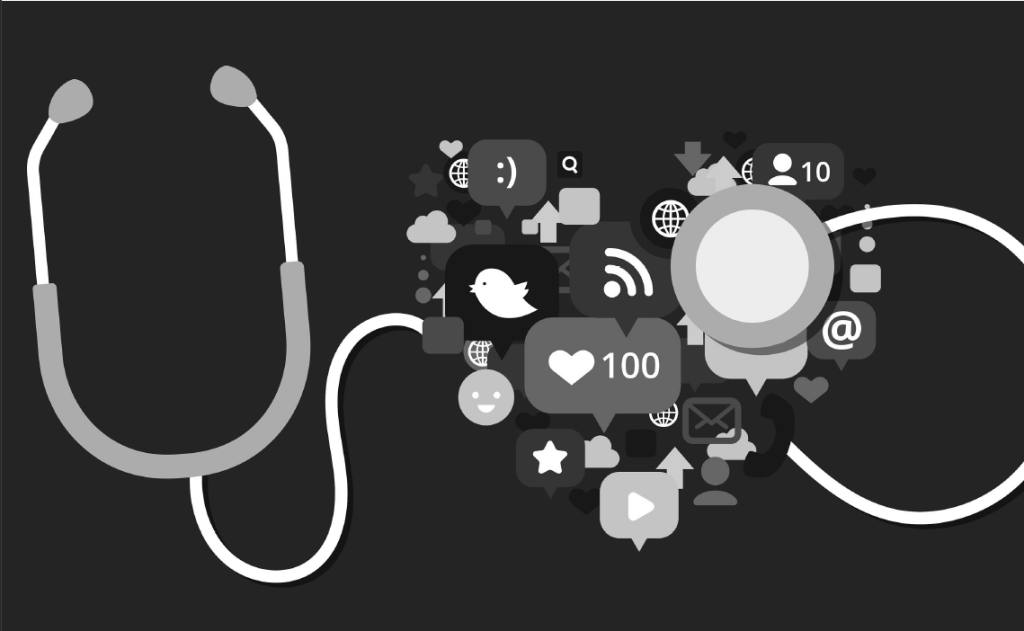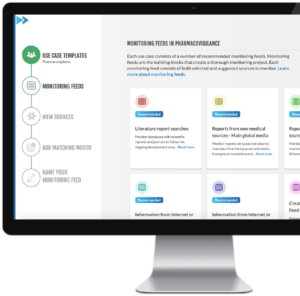Introduction
Pharmacovigilance is the obligation for Marketing Authorisation (MA) holders to monitor the safety of their bio-pharmaceutical products throughout their lifecycle. Abreviated to (PV) pharmacovigilance is a large, complex area. As the world changes and evolves it is essential for PV to keep up, including the ability to utilise all available avenues to monitor and address the safety of products, both in development and post-marketing.
Social listening, as the name suggests, is the monitoring of information being posted and discussed in the world of social media. With no global boundaries, the analysis of social media is a rapidly growing market, anticipated to hit USD 11.6 billion by 2023 [1], and not unexpectedly is already heavily exploited by those within bio-pharmaceutical marketing roles. But when it comes to the non-commercial practice of social listening for safety, the enthusiasm and tools are not so apparent.
“develop a rapid and open dialogue with the patients and healthcare practitioners using your products”
Bio-pharmaceutical companies are already driven to ensure their products are as safe as they can be, and this is mirrored by the regulatory agencies around the world. The social media challenge relates more to the complexities of safety data gathering, analysis and reporting of data from such diverse sources and then actively filtering out the noise.
However, the benefits to the bio-pharmaceutical companies of focusing attention on social media include the ability to develop a rapid and open dialogue between themselves and the patients and healthcare practitioners using their products.

European Guidelines and Initiatives
In Europe, the Good Pharmacovigilance Module VI provides guidance for MA holders to regularly screen for suspected adverse reactions from the internet or digital media under their management or responsibility. As per the guidance, digital media is considered to be company-sponsored if it is owned, paid for or controlled by the MA holder. It certainly can be argued that open-access social media accounts, such as Linked-In, Twitter, Facebook and Instagram do not entirely conform to this definition. Regardless of whether a legal obligation exists to monitor social media for suspected adverse reactions, a question for the legal departments, it is undoubtable that a vast amount of drug safety data does exist in the posts, Tweets, and discussion forums from around the globe.
The EU’s Innovative Medicines Initiative project, titled Web-Recognizing Adverse Drug Reactions (WEB-RADR) explores the value of social media for signal detection and identifying adverse events. There is an overall aim to enable PV experts to start considering the impact of leveraging social media as part of a broader PV strategy.
As part of its ongoing work, WEB-RADR developed and evaluated several novel text and data mining methods for social media and presented various recommendations [2], some of which are shown here:
General social media, as exemplified by sample data from Facebook and Twitter, are not recommended for broad statistical signal detection.
Social media channels may provide a useful adjunct to pharmacovigilance activities in specific niche areas such as exposure during pregnancy and abuse/misuse of medicines.
Future enhancement of adverse event recognition algorithms may broaden the scope and utility of social media over time.
Social Listening in the Literature
Efforts to recognize the importance of monitoring and understanding PV-related data captured in social media and the methods for doing so are increasing.
“a simple search on Pubmed for“use of social media in pharmacovigilance” reveals a number of positive results”
Indeed, a simple search on Pubmed for “use of social media in pharmacovigilance” reveals a number of positive results. A 2019 study (Golder et al.) to assess the feasibility of using social media data as an alternative source for pregnancy surveillance for regulatory decision-making, demonstrates that it is feasible to use Twitter data in assessing medication intake and birth defects (although not as a replacement for pregnancy registries). The researchers conclude that with further refinement and validation, social media data may increase their value to support regulatory decision-making regarding pregnancy outcomes in women using medications during their pregnancies [3].
“up to 38% of the SDRs were detected earlier in the forums than in VigiBase”
A study from 2018 (Kürzinger et al.) discusses social media as an emerging method for signal detection in PV. It compares the consistency of signals of disproportionate reporting (SDRs) detected from patients’ medical forums versus a traditional reporting system, VigiBase. The results showed that up to 38% of the SDRs were detected earlier in the forums than in VigiBase, concluding that such medical forum data may be a valuable source for signal detection and potentially increasing patient safety [4].
These two, and various other studies, support that utilising unconventional sources like social media and discussion boards are a further potential source of data to be used in early signal detection within PV practice. This could help to propel beneficial transformations in PV, with the goal of improved patient safety.
The Future of Social Listening in PV
There obviously still exists logistical, ethical and legal issues with regards to monitoring social media. These include the collection, handling and retention of large amounts of personal data, particularly when data is often removed or edited by the contributor or platform owner, leading to a necessity for a copy to be kept by the bio-pharmaceutical companies, not least for audit purposes.
“automated processes for targeted and relevant content monitoring are needed”
Existing PV software solutions, and there are many, often do not provide a tool for social media monitoring. Where such services do exist, these are generally manual processes, requiring considerable resource. It is apparent that when dealing with such varied and expansive data, automated processes for targeted and relevant content monitoring are needed.
There are some automated content monitoring solutions in the market for this, such as the SaaS platform from Hoodin. For these to be integrated into a PV system for adverse event monitoring/signal detection they must be shown to be trusted, reliable and robust.
Conclusion
It certainly seems highly likely that the monitoring of social media will become standard practice in PV at some future time point. But before it does, a thorough and ongoing appraisal of its use is required, to determine how significant the results are and what impact they will have on patient outcomes.

References:
1. Global Social Media Analytics Market (2017-2023) – Marqual IT Solutions Pvt. Ltd (KBVResearch)
2. van Stekelenborg et al. Recommendations for the Use of Social Media in Pharmacovigilance: Lessons from IMI WEB-RADR. Drug Saf 42,1393–1407 (2019)
3. Golder S, et al. Pharmacoepidemiologic Evaluation of Birth Defects from Health-Related Postings in Social Media During Pregnancy. DrugSaf. 2019 Mar;42(3):389-400.
4. Kürzinger ML et al. Web-Based SignalDetection Using Medical Forums Data in France: Comparative Analysis. J Med Internet Res. 2018Nov 20;20(11):e10466.
This article was written by Nicholas Wells for Hoodin and is reproduced/adapted here with their kind permission.
Date of first publishing: 9 October 2021